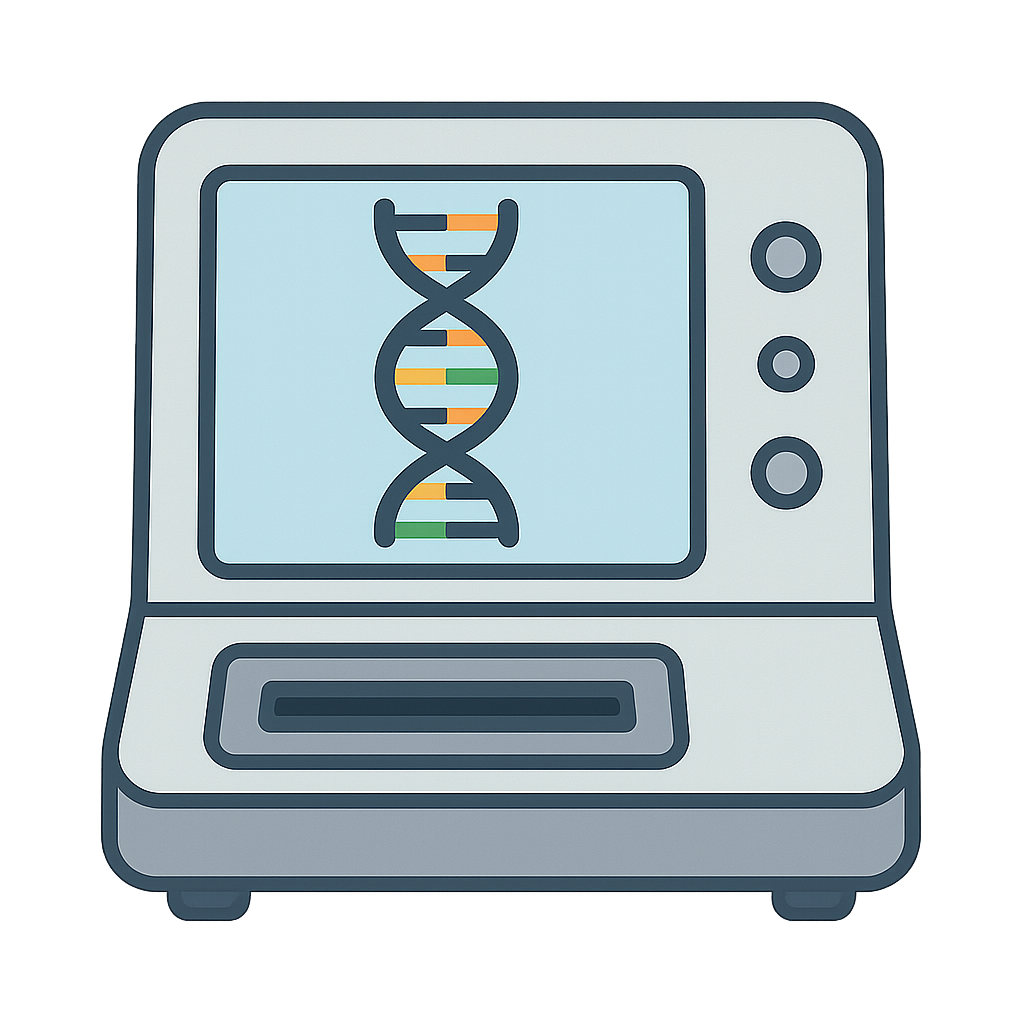The Book of Life
Imagine a library where every book contains the complete instructions for building a living thing—a towering redwood tree, a tiny ant, or even a human being. For centuries, humanity knew this library existed. They could see the books, elegant spiral staircases of information called DNA, inside every living cell. But the books were locked, written in a secret language made of just four letters: A, T, C, and G. They were beautiful to look at, these double helixes, but their stories remained a profound mystery. What secrets did they hold about life, health, and history? That's where I come in. My name is DNA Sequencing, and I am the key that unlocked that library. I am not a physical object, but a method, an idea, a way of seeing. I am the decoder ring that allowed scientists to finally read the most important stories ever written—the stories of life itself.
My birth was not a single flash of inspiration, but the result of years of patient, careful work by brilliant minds puzzling over the same great question. The world was full of scientists trying to decipher the genetic code, but in the 1970s, one man in particular, an English scientist named Frederick Sanger, had a breakthrough. On a seemingly ordinary day in 1977, he perfected a method that was both simple and ingenious. Imagine you have a very long sentence you need to read, but you can only see one letter at a time. Sanger’s idea was like creating special 'stop signs' that would halt the copying of a DNA strand at each specific letter—one for A, one for T, one for C, and one for G. By making millions of copies of different lengths, each ending with a known letter, he could arrange them by size and read the sequence, letter by letter. It was like piecing together a sentence from countless fragments. I must also tell you about Allan Maxam and Walter Gilbert, two American scientists who developed a different, but equally clever, method around the same time. Their work proved that great ideas can blossom in different minds simultaneously, all reaching for the same truth. This collective effort was my true beginning. The moment their methods worked, I was born, and the book of life was finally opened for all to read.
Once I learned to read individual sentences and paragraphs, the next logical step was a monumental one: to read an entire book from cover to cover. This led to my greatest challenge and most celebrated achievement, the Human Genome Project. It was an audacious goal announced to the world, a mission to map the entire genetic instruction book for a human being. On October 1st, 1990, an international team of scientists from the United States, the United Kingdom, France, Germany, Japan, and China officially began this quest. It was one of the most incredible collaborations in the history of science. Imagine thousands of researchers on different continents, all working together, sharing their findings, and racing toward a common goal. They weren't competing; they were building something together. For thirteen years, they painstakingly read through the three billion letters of our human code. There were setbacks, debates, and moments of incredible discovery. Finally, on April 14th, 2003, the project was declared complete. Humanity had its first complete reference book for a human being. It was like finishing the first encyclopedia of ourselves, a map that could guide us through the complexities of health, disease, and what it means to be human. I was no longer just a laboratory technique; I was the foundation of a new era in medicine and biology.
In the years since the Human Genome Project, I have grown and changed in ways my creators could have hardly imagined. That first human genome took thirteen years and billions of dollars to complete. Today, I can read a person's entire genome in a matter of hours for a fraction of the cost. I have become faster, more accurate, and more accessible than ever before. My purpose has expanded far beyond the research lab. I now help doctors diagnose rare genetic diseases in children, giving families answers they once could only dream of. I help scientists develop targeted cancer treatments by reading the specific genetic mutations in a tumor. I even help people connect with their past, uncovering their ancestry and telling them the story of their family's journey through history. My work extends to the entire planet, as I help conservationists protect endangered species by understanding their genetic diversity. The book of life is vast, and there are still countless chapters left to read. I am proud to be the tool that allows new generations of curious and compassionate people to continue exploring, asking questions, and writing the next chapter of discovery.
Reading Comprehension Questions
Click to see answer
